CONSULTANT
CONSULTANT
Jewel Endoscopy Center Mumbai
Nanavati Hospital Mumbai
Lilavati Hospital And Research Center Mumbai
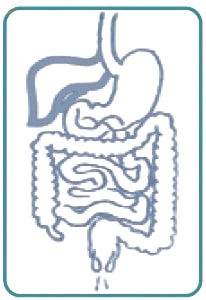

DR. JAYANT BARVE
Gastroenterologist, G.I. Endoscopist &
Gastroentrology Physician
A revolution happened in gastroenterology 50 years ago due to invention of flexible endoscope.
For the first time gastroenterologist had an opportunity to visualise the digestive tract live and
make a diagnosis with very high accuracy. Subsequent developments resulted in invention of videoscopes with
its digital advantage and allowed treatment of many diseases of digestive tract without any surgical intervention,
hospitalisation, minimum morbidity and mortality and a cheaper option of treatment.
It allowed early diagnosis of cancer
and its endoscopic treatment without need for surgery.
GASTROINTESTINAL ENDOSCOPY
Gastrointestinal endoscopy (visualization of digestive tract)
is broadly divided into following categories :
A. UPPER GI ENDOSCOPY popularly known as GASTROSCOPY.
This is done commonly as an out patient procedure with mild sedation without anaesthesia.
Patient can resume with daily routine within an hour.
But should not drive for 2 hours if patient has received sedation.
This procedure allows diagnosis of diseases of upper Gastrointestinal tract, esophagus, stomach and duodenum.
UPPER GI ENDOSCOPY
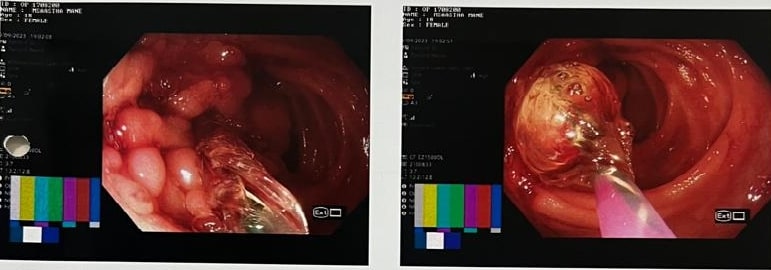

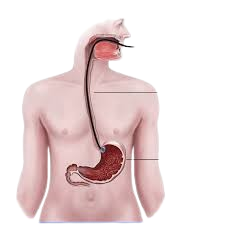
Common conditions for which this procedure is advocated are as follows :
1. Acidity which includes symptoms like burning in stomach, heartburns, excessive burning etc.
2. Reflux where patient has acid rising into throat with or without taste of food particles.
These patients may have persistent dry cough more at night with or without wheezing
and may be considered to have bronchial asthama.
Gastroscopy


3. Difficulty in swallowing : This is considered as a serious symptom at any age group.
Difficulty in Swallowing


This can be due to severe acidic ulcerations, narrowing of the food passage due to non cancer or
cancerous lesion or pressure on the food pipe from outside.
Cancerous Lesion - Balloon Dilatation as a Palliative Treatment
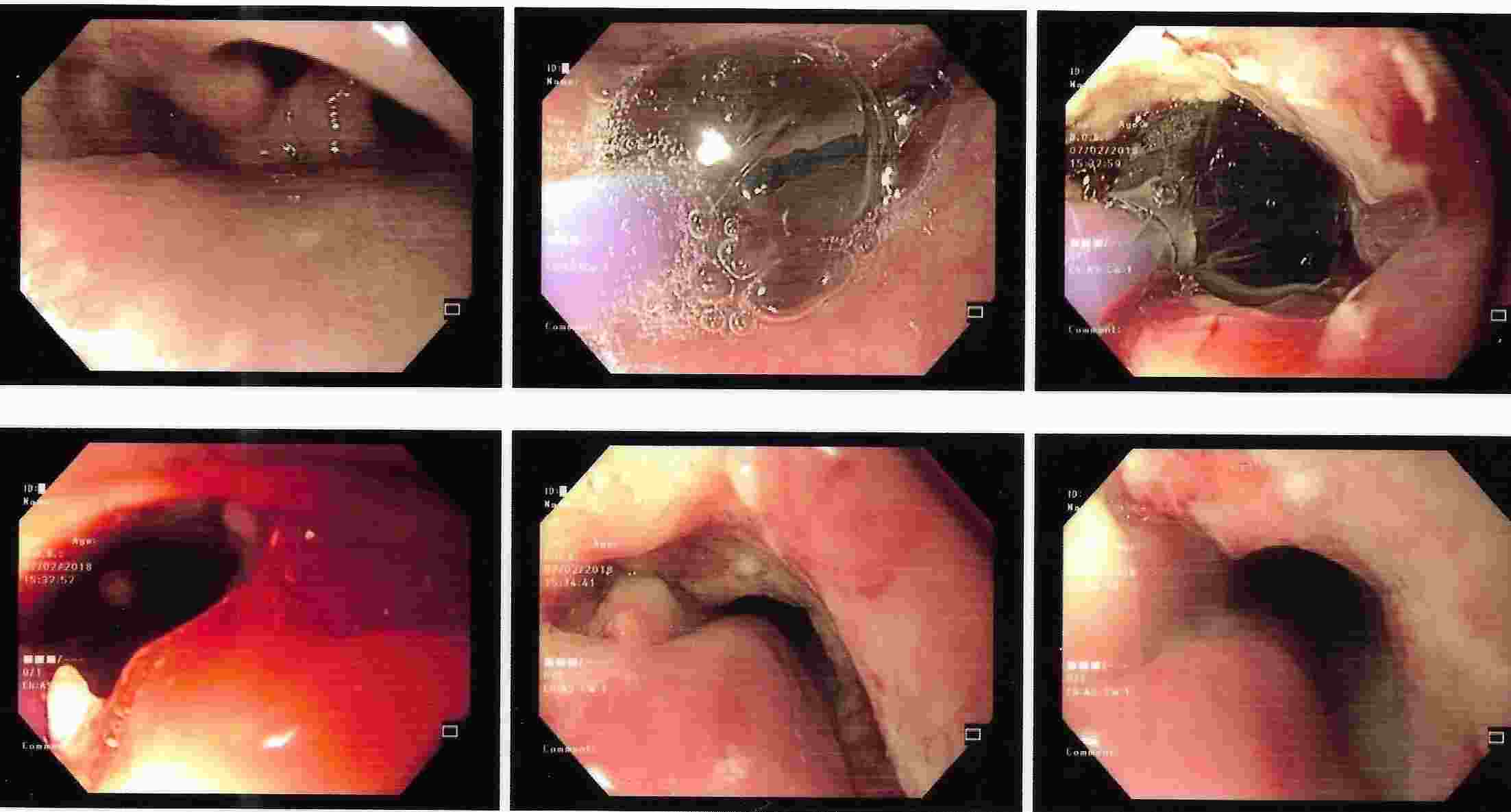

Cancerous Lesion - Metal Stent as a Palliative Treatment
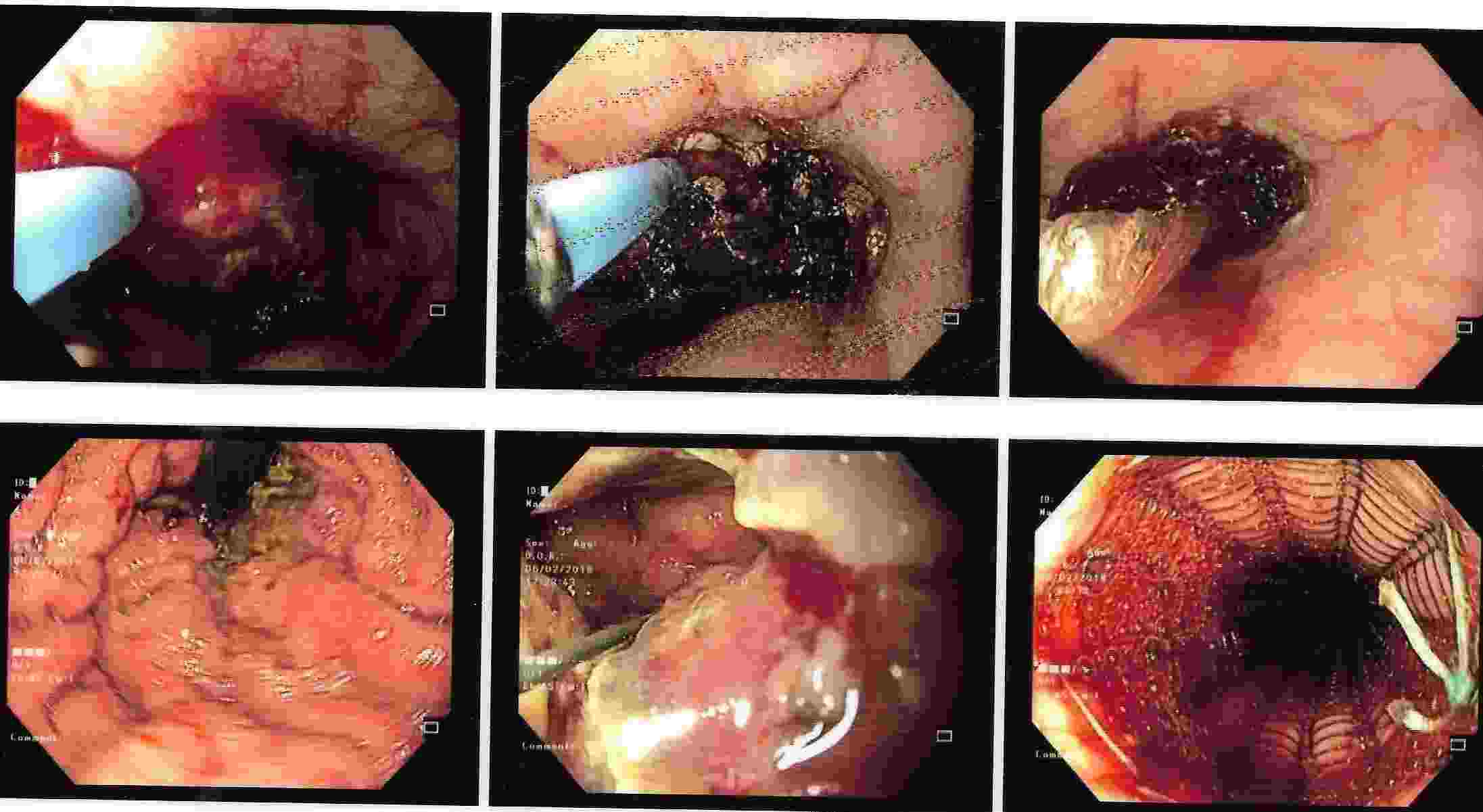

Cancerous Lesion - Metal Stent as a Palliative Treatment
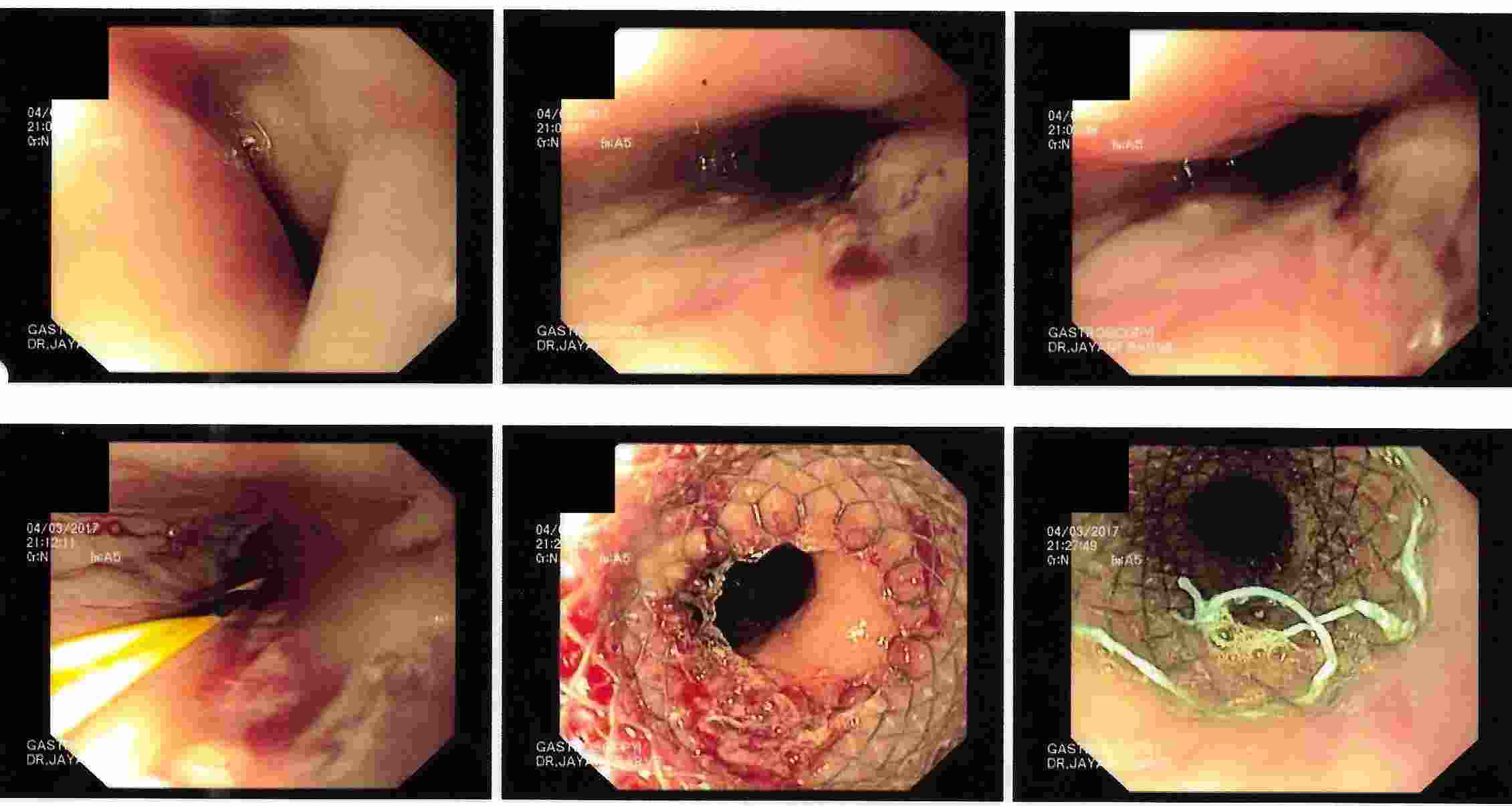

Cancerous Lesion - Metal Stent as a Palliative Treatment


Strong contractions of the food pipe is known as dysmotility of esophagus and an unusual condition known
as Achalasia Cardia due to powerful contraction of the valve of the esophagus at its lower end which
can cause difficulty in swallowing.
Achalasia Cardia - Balloon Dilatation
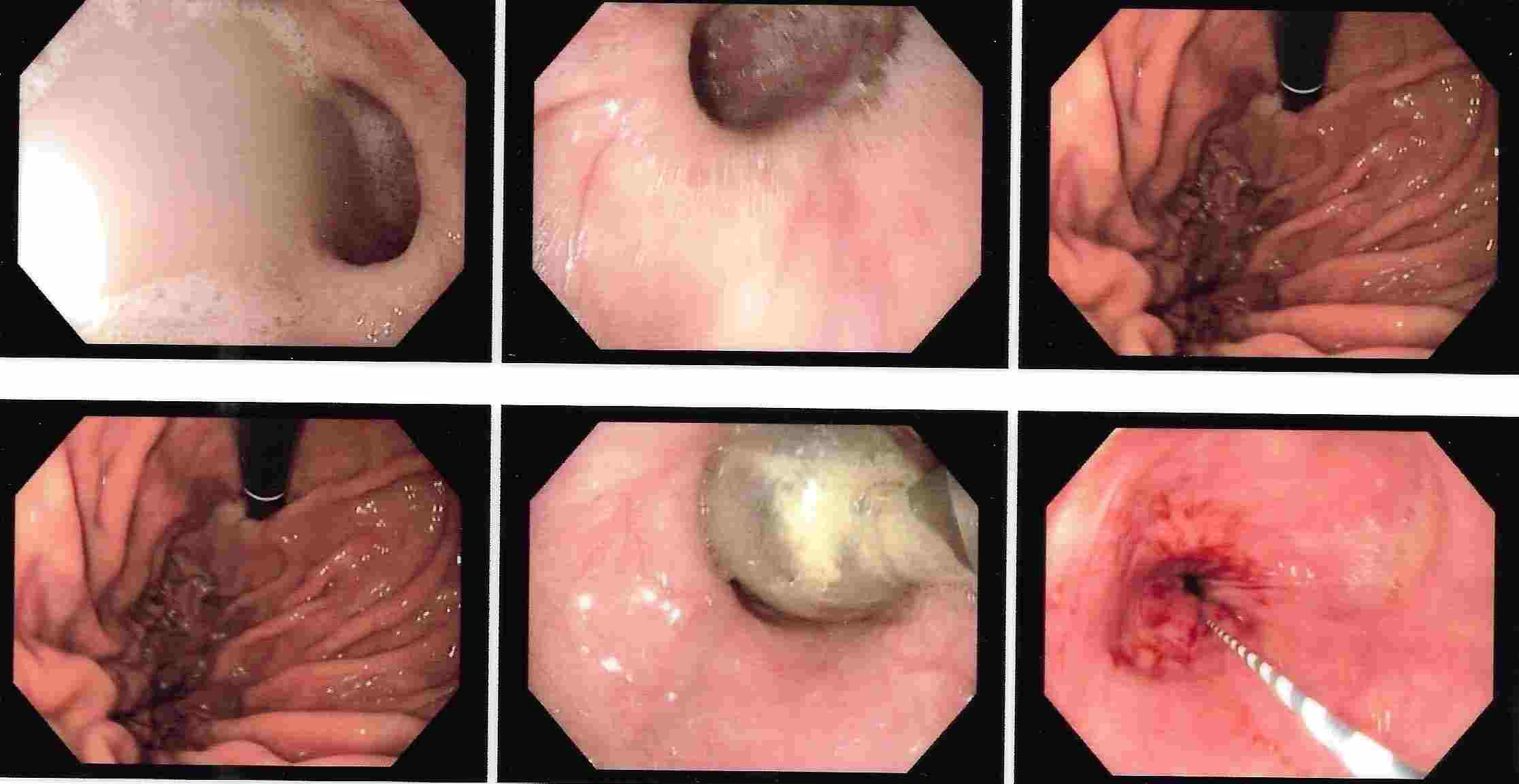

Achalasia Cardia - Balloon Dilatation


Achalasia Cardia - Balloon Dilatation
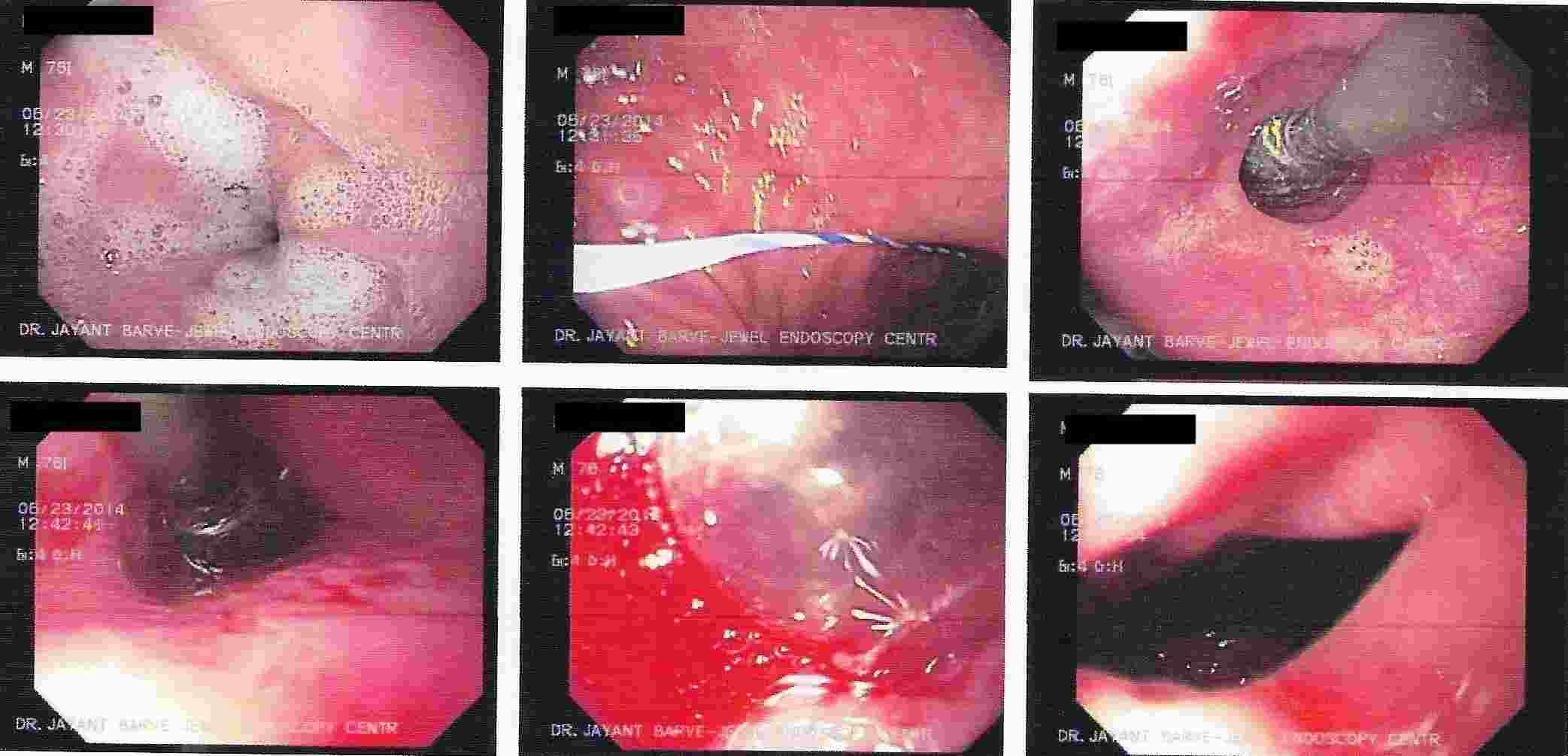

Achalasia Cardia - Balloon Dilatation
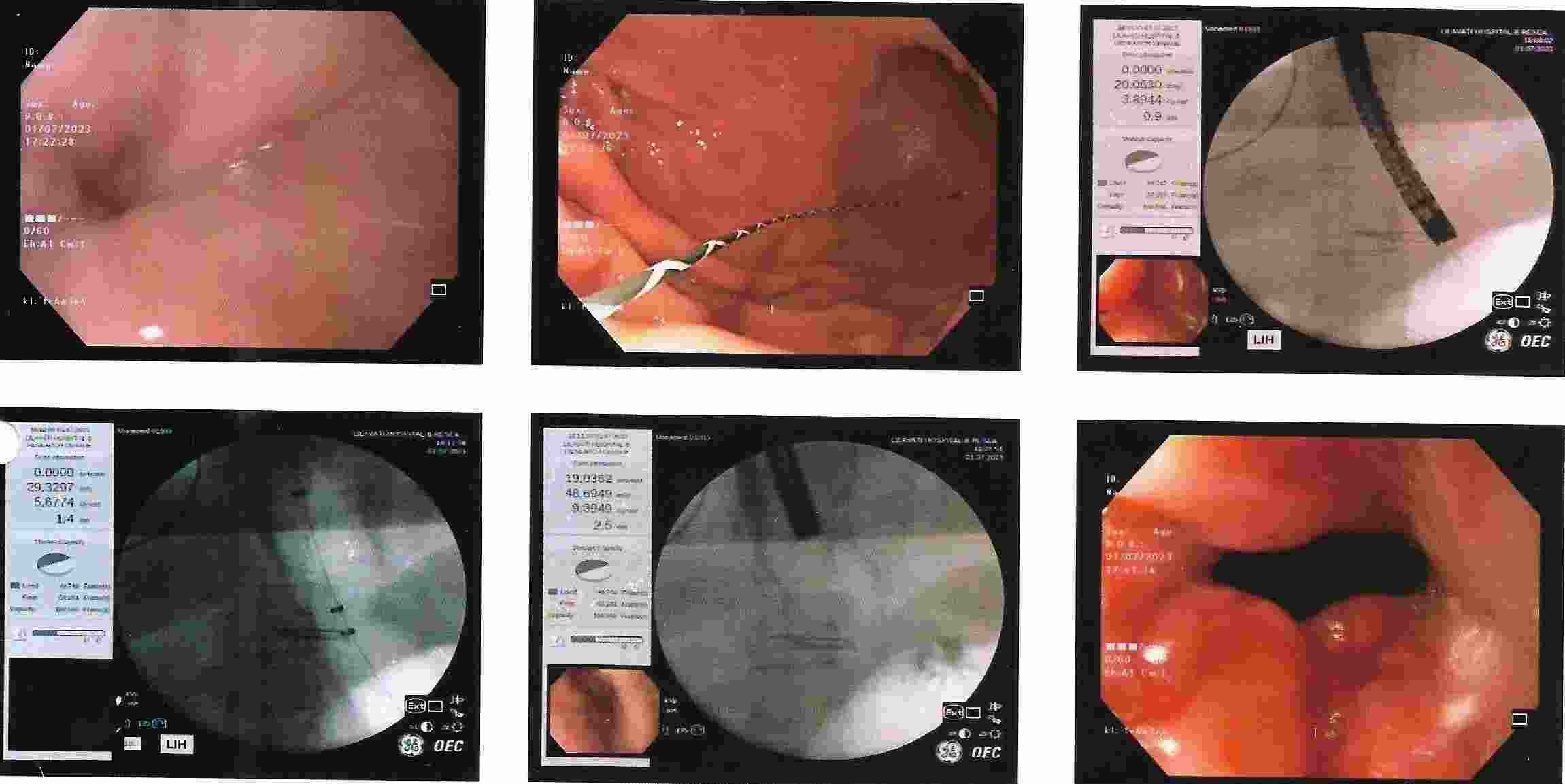
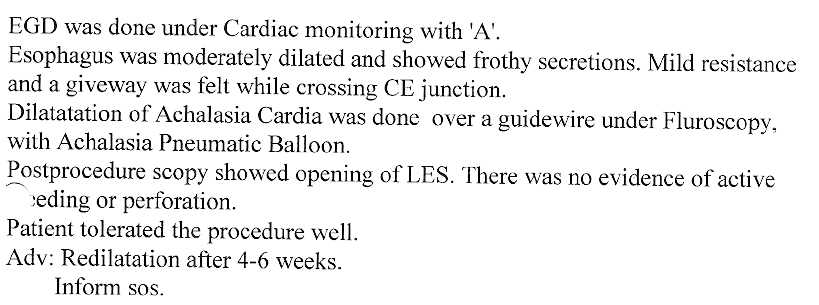
4. Diagnosis of Hiatus Hernia
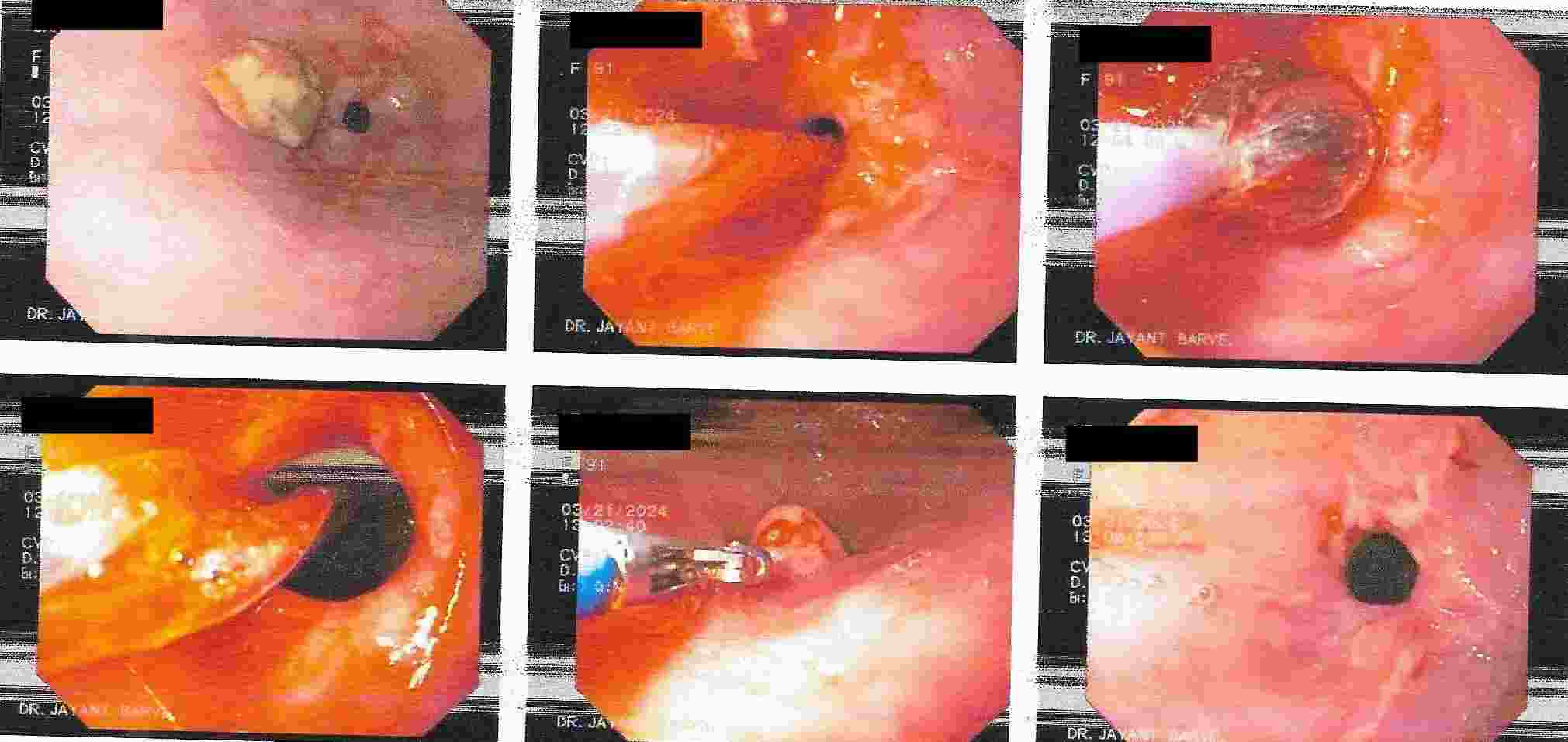
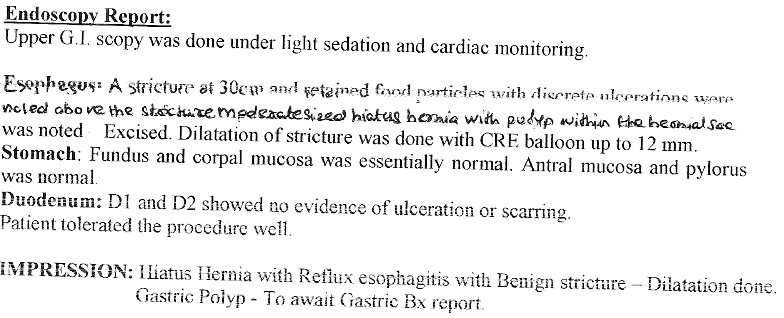
5. Vomiting of blood / coffee coloured fluid is a serious symptom which may be due to ulcers, cancer of upper GI tract or due to cirrhosis of liver. These conditions can be accurately diagnosed by gastroscopy and majority of these conditions can be treated by endoscopy without need of surgery.
Vomiting of Blood - Endoscopic Treatment
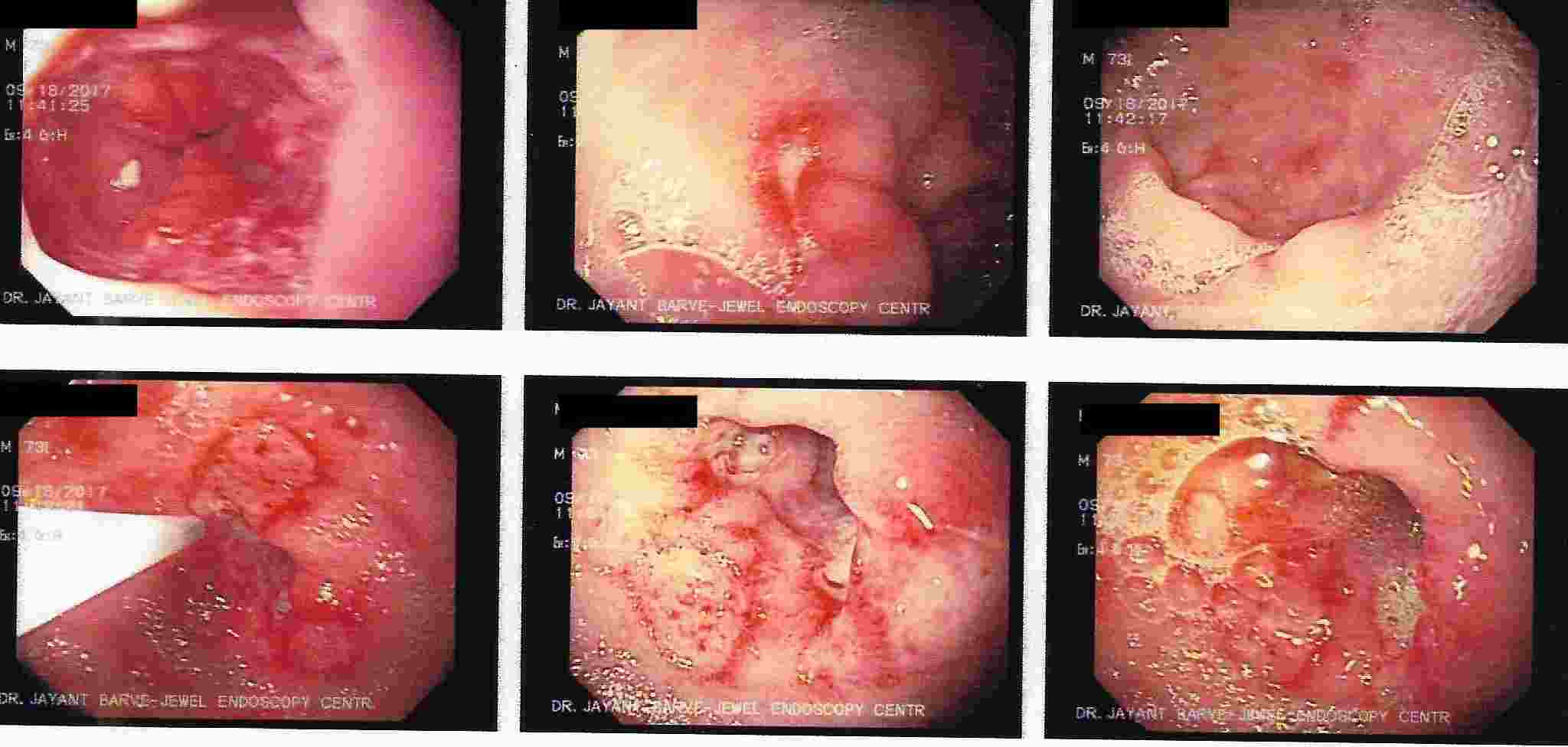

Cirrhosis of Liver - Bleeding from Gastric Varices
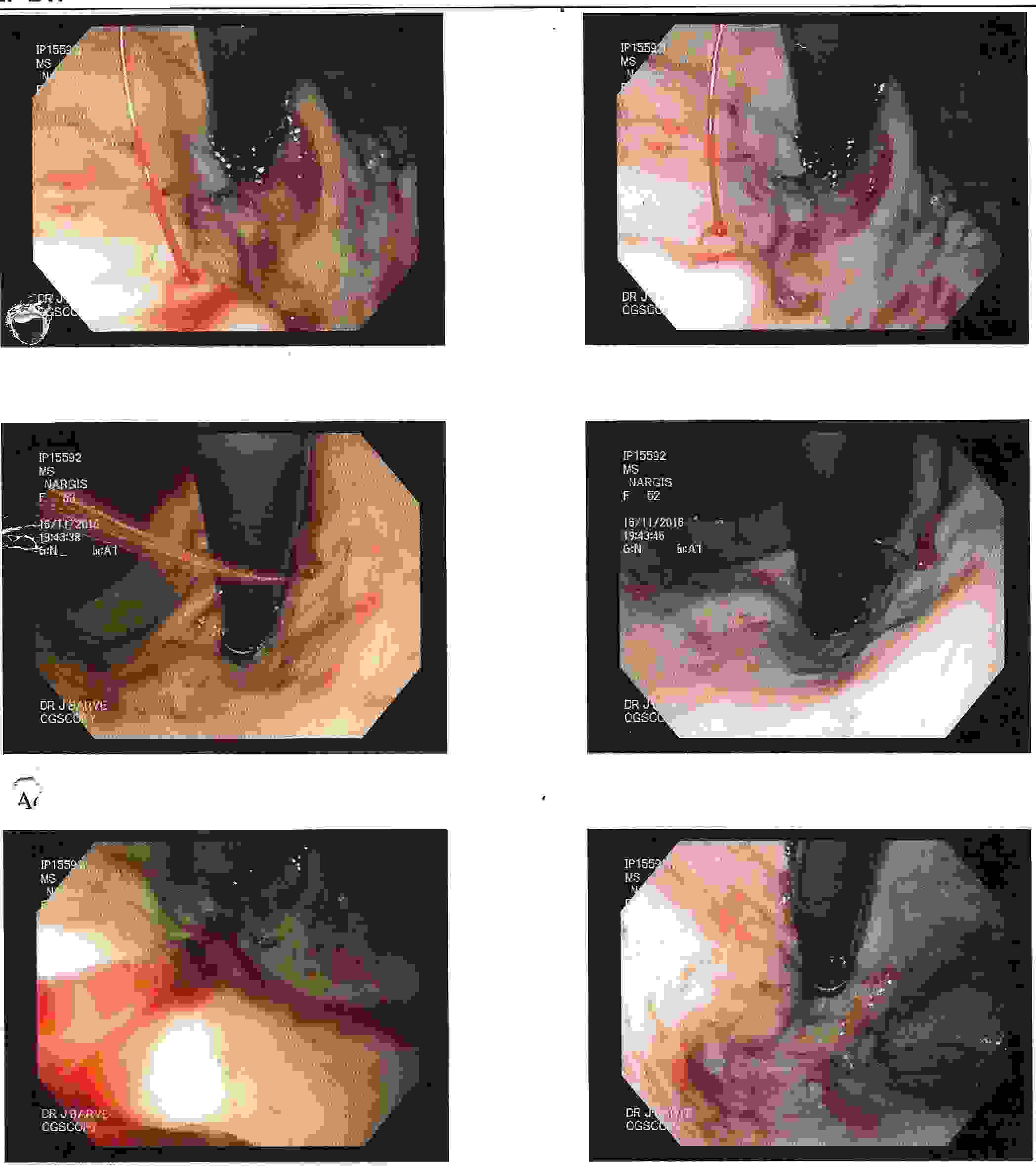
A jet like bleeding from gastric varices can be life threatening and is effectively controlled by endoscopic therapy.
6. Foreign Body impaction can be dangerous especially with sharp objects alkaline batteries etc.
Foreign Body Impaction
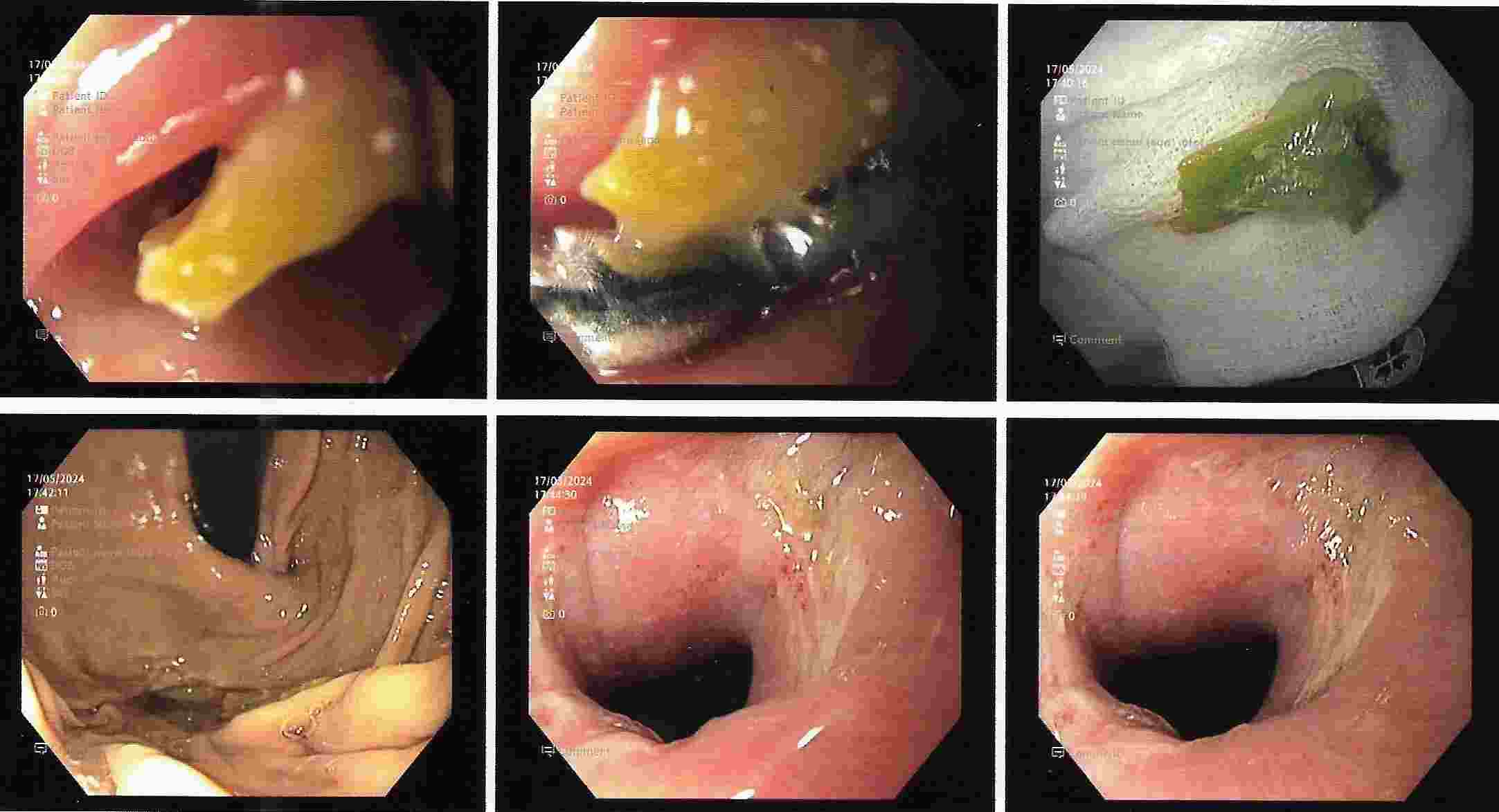

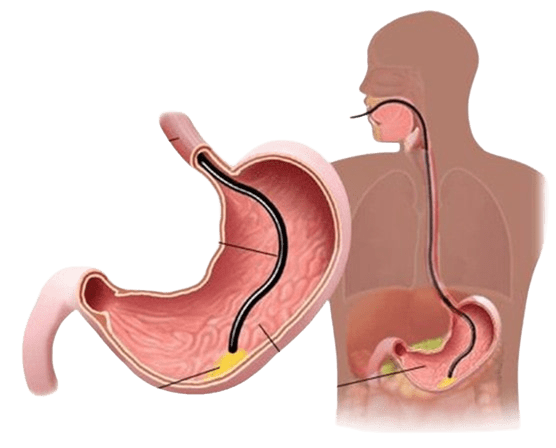
Common symptoms are :
1. Burning and pain in abdomen
2. Nausea and vomiting
3. Bloating or gas in abdomen or burping.
4. Poor appetite, fullness after small amount food and vomiting may suggest some serious disease like ulcer or cancer or tumour.
Stomach Outlet Obstruction
Causing Abdominal Fullness and Vomiting
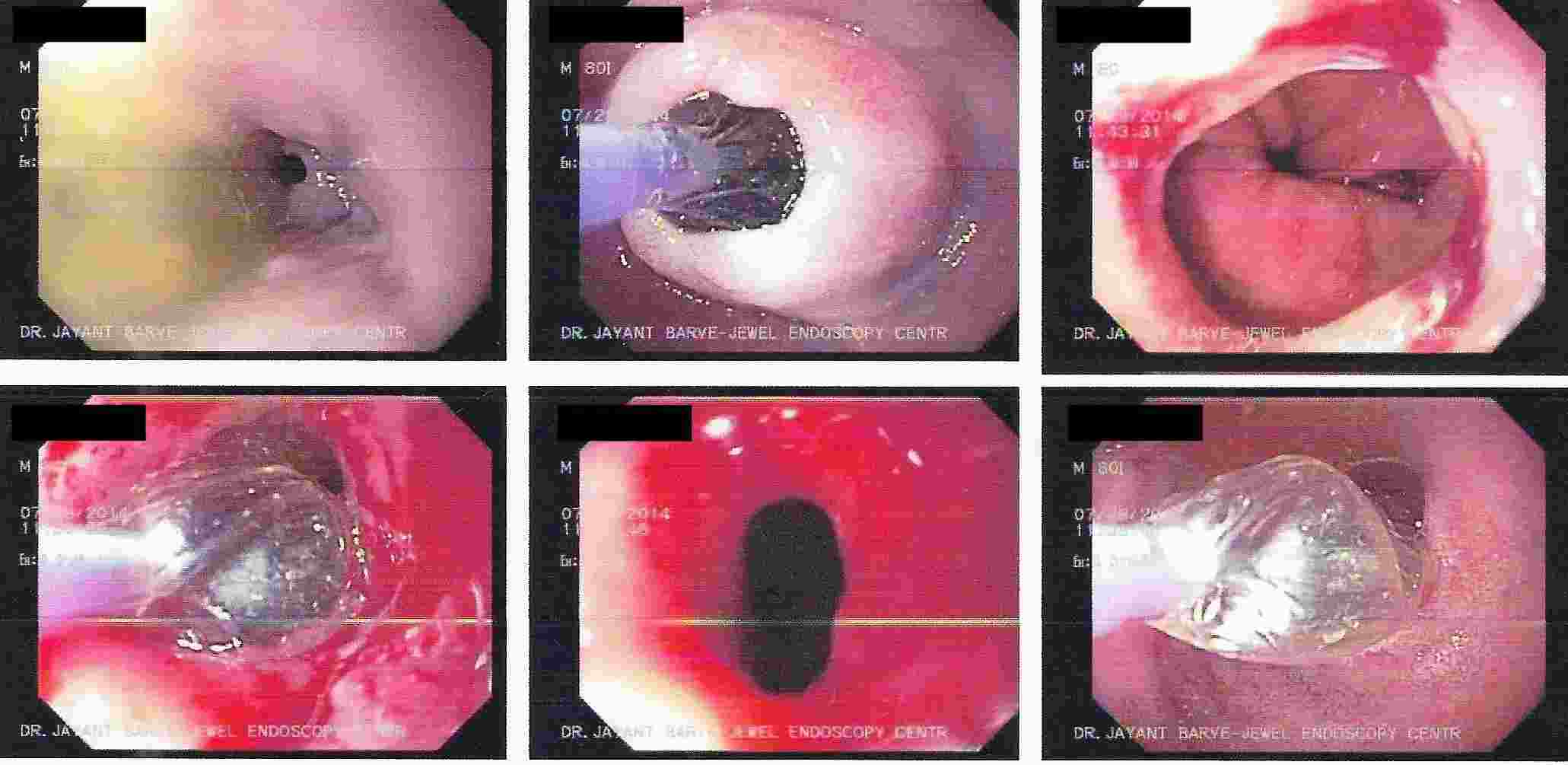

Cancer of the Stomach with Vomiting
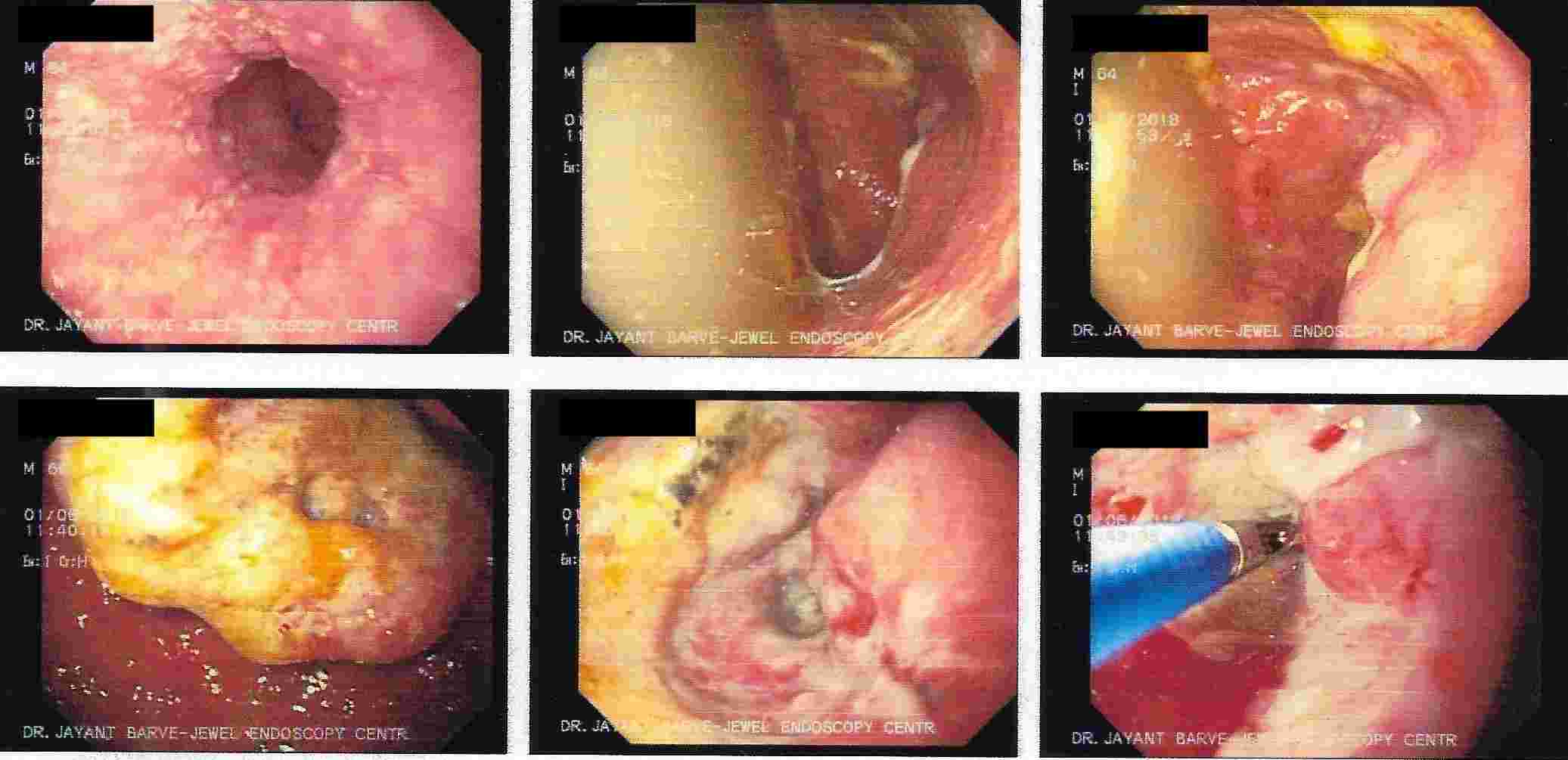

Tumours of the Stomach


Polyps of the Stomach


5. Vomiting of blood can be due to severe acidity, consumption of pain killers or blood thinners, ulcer, cancer, cirrhosis of liver etc..
Correct diagnosis and treatment can be offered to these patients.
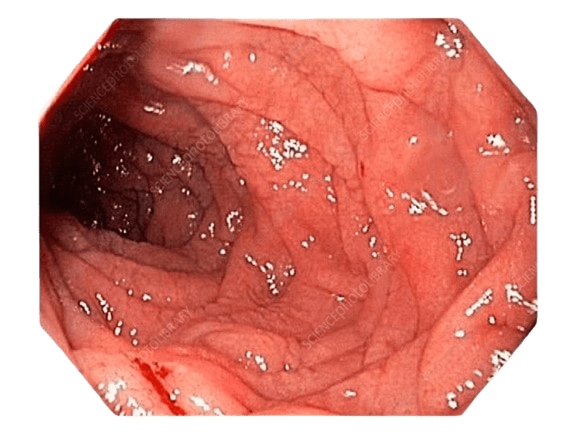
This is the beginning of the small intestine and most commonly affected by acidity and ulcer.
It also may be involved in certain cancers of upper GI tract.
Bloating, fullness of abdomen, burping, vomiting, pain or burning in upper abdomen mostly on empty stomach after consumption of chillies,
spices or heavy meals occurring at times during sleep are the symptoms related to duodenum.
Duodenum - Chronic Ulcer
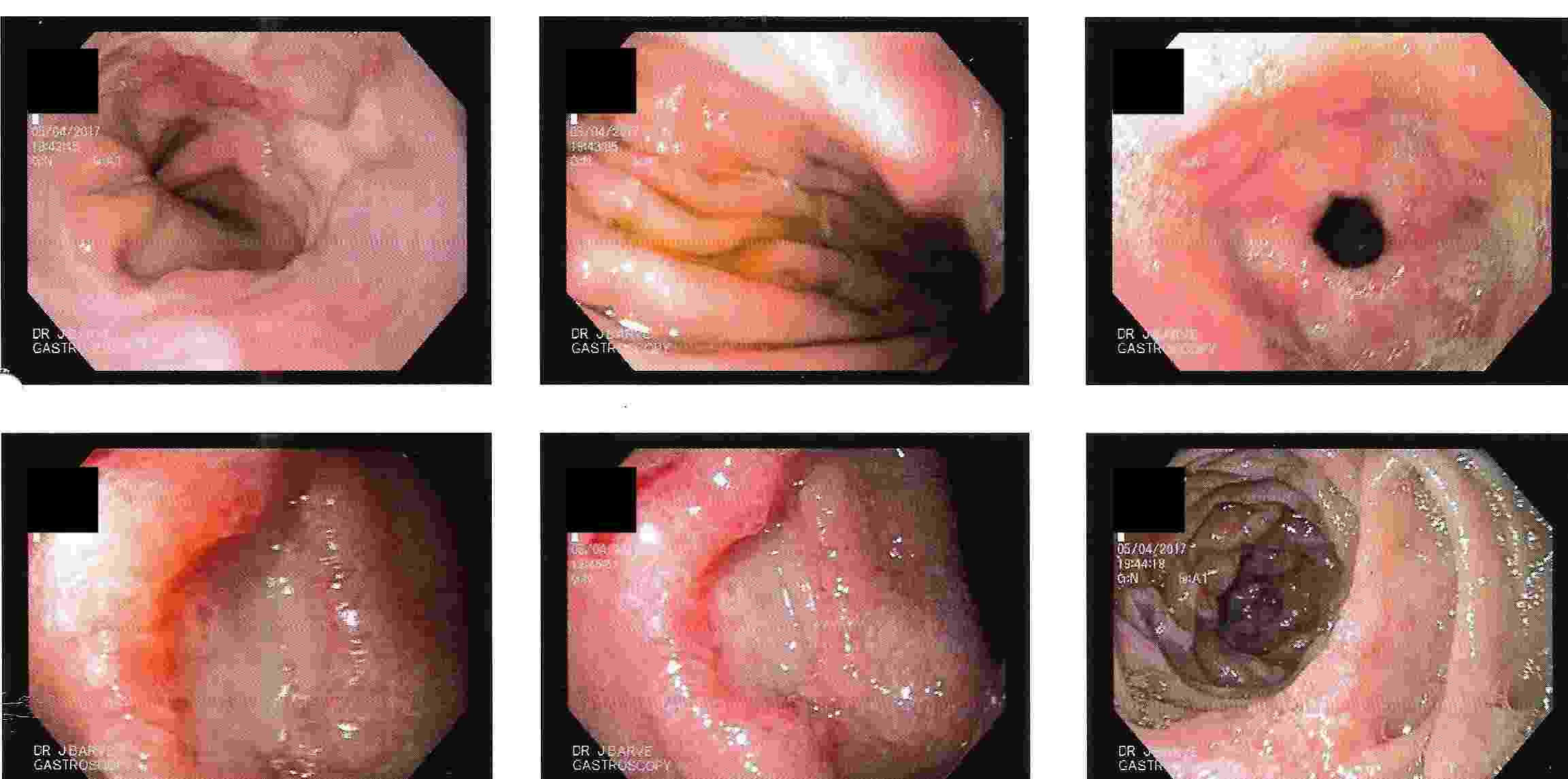

Duodenum - Chronic Ulcer with Bleeding


Vomiting of blood due to ulcer, narrowing of duodenum due to ulcer or cancer can be very effectively treated by gastroscopy.
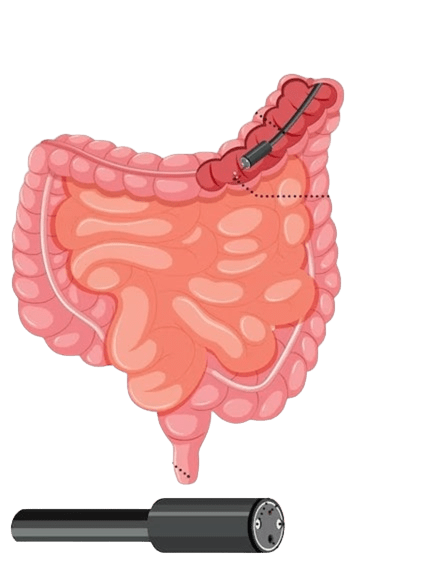
COLONOSCOPY
Colonoscopy is a procedure where the doctor can examine the lowermost part of the digestive tract
by a flexible instrument called as Colonoscope. Common indications for Colonoscopy are
1. Constipation.
2. Loose motions.
3. Pain in lower abdomen.
4. Excessive gas from below.
5. Burning or pain in anal region.
6. Altered bowel habits.
7. Frank blood in the stool, occult blood in the stool or anaemia.
These conditions are seen more often in elderly people where Colonoscopy is essential for making an early diagnosis of cancer of the colon.
Colonoscopy is advocated for first blood relations of the patient who has got cancer of the colon.
Common mistake is to attribute blood in the stool for piles or fissure and get wrongly treated for a long time.
The correct diagnosis of cancer of the colon or rectum if made in time can offer a curative treatment.
Major bleeding in the stool in elderly people is commonly due to diverticulitis of colon.
This is a condition where there are balloon like projections arising from colonic mucosa and
which bleed due to rupture of a blood vessel. Colonic polyps is also an important condition to diagnose because
polyps have potential of becoming cancerous in future. Removal of polyp by polypectomy without
open surgery can offer cure in the early stage of cancer. A proper follow-up can keep the patient free from cancer.
Altered bowel habits, watery or semisolid stools, gripping pain in abdomen, mucus and blood in the stool,
incomplete evacuation can all be due to a condition called as colitis. Colitis has got different causes
like ulcerative colitis, Crohn’s disease, infections, tuberculosis, amoebic colitis, bacillary dysentery and many more.
Corrcet diagnosis by Colonoscopy will allow patients to be treated properly.
IBD - Ulcerative Colitis
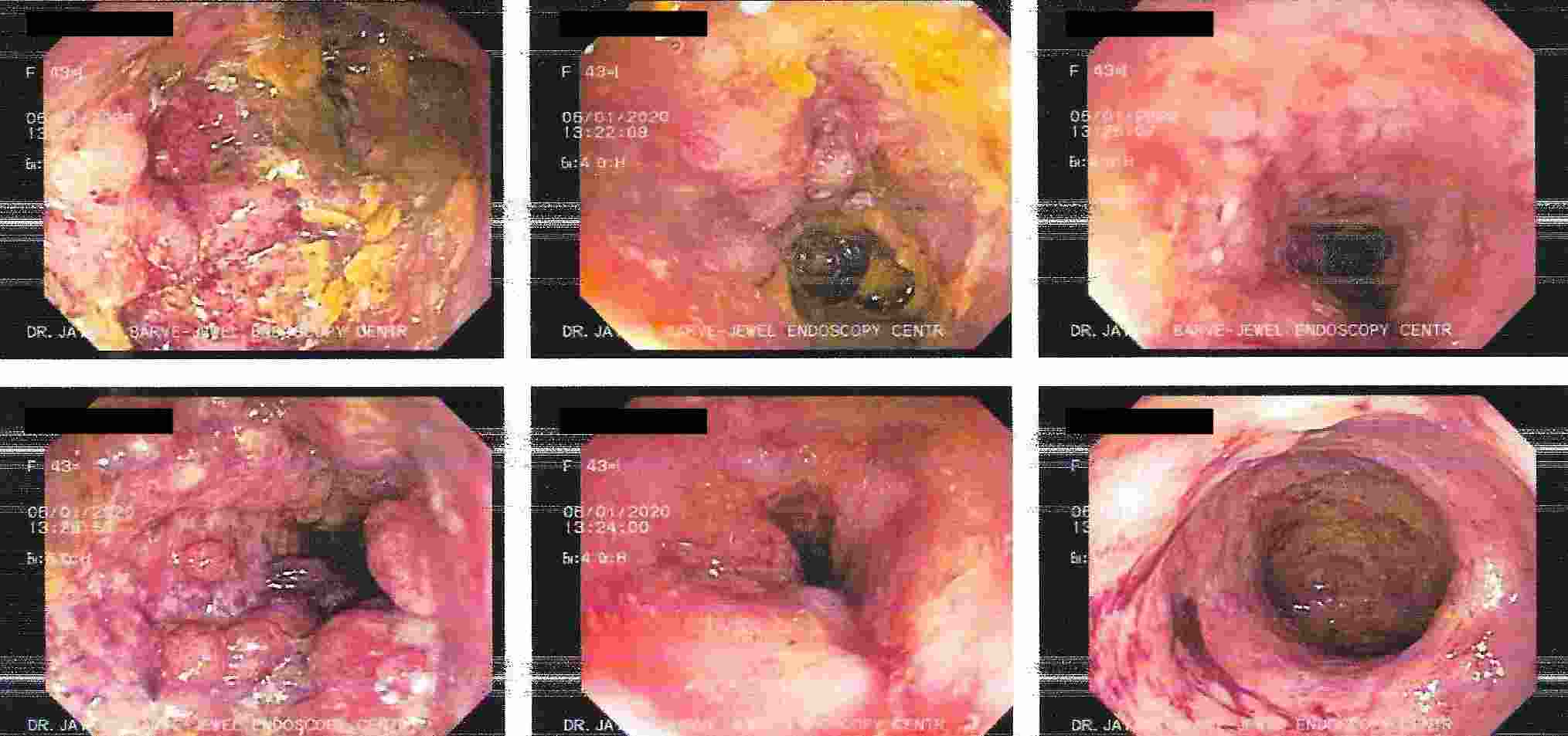

IBD - Crohn's Disease
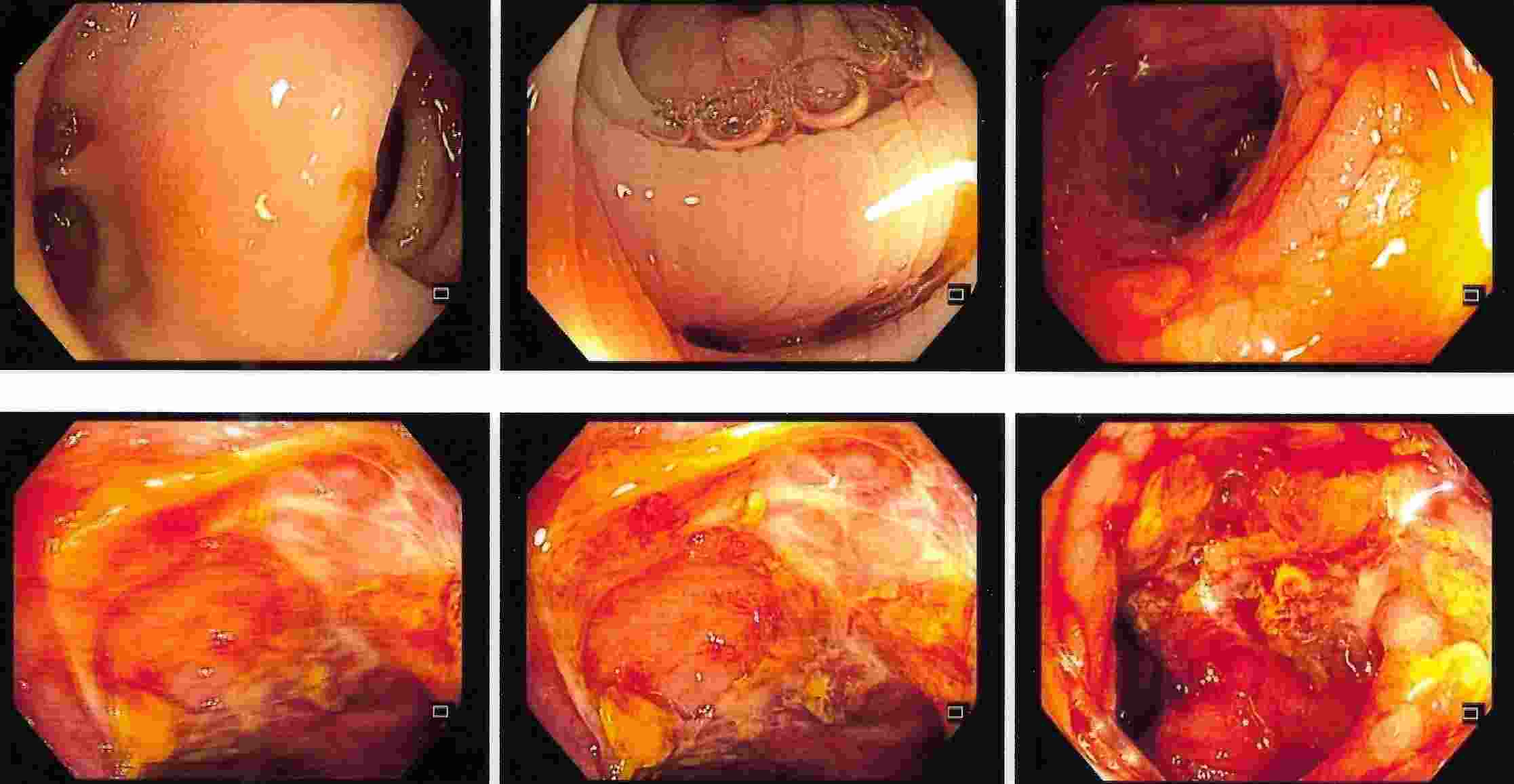

IBD - Small Intenstinal Endoscopy (Enteroscopy)
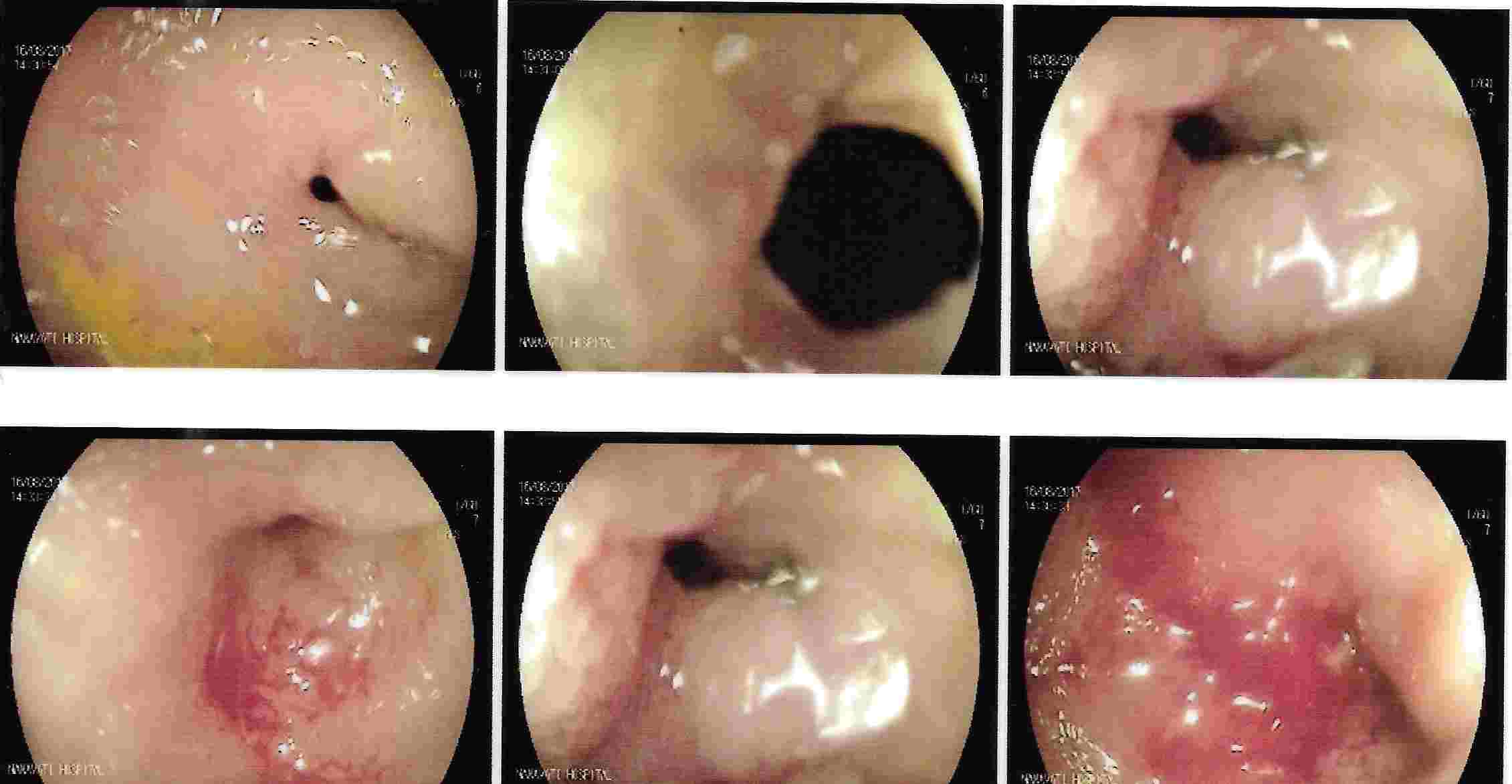

Cancer of the Colon


Ulcerative Colitis
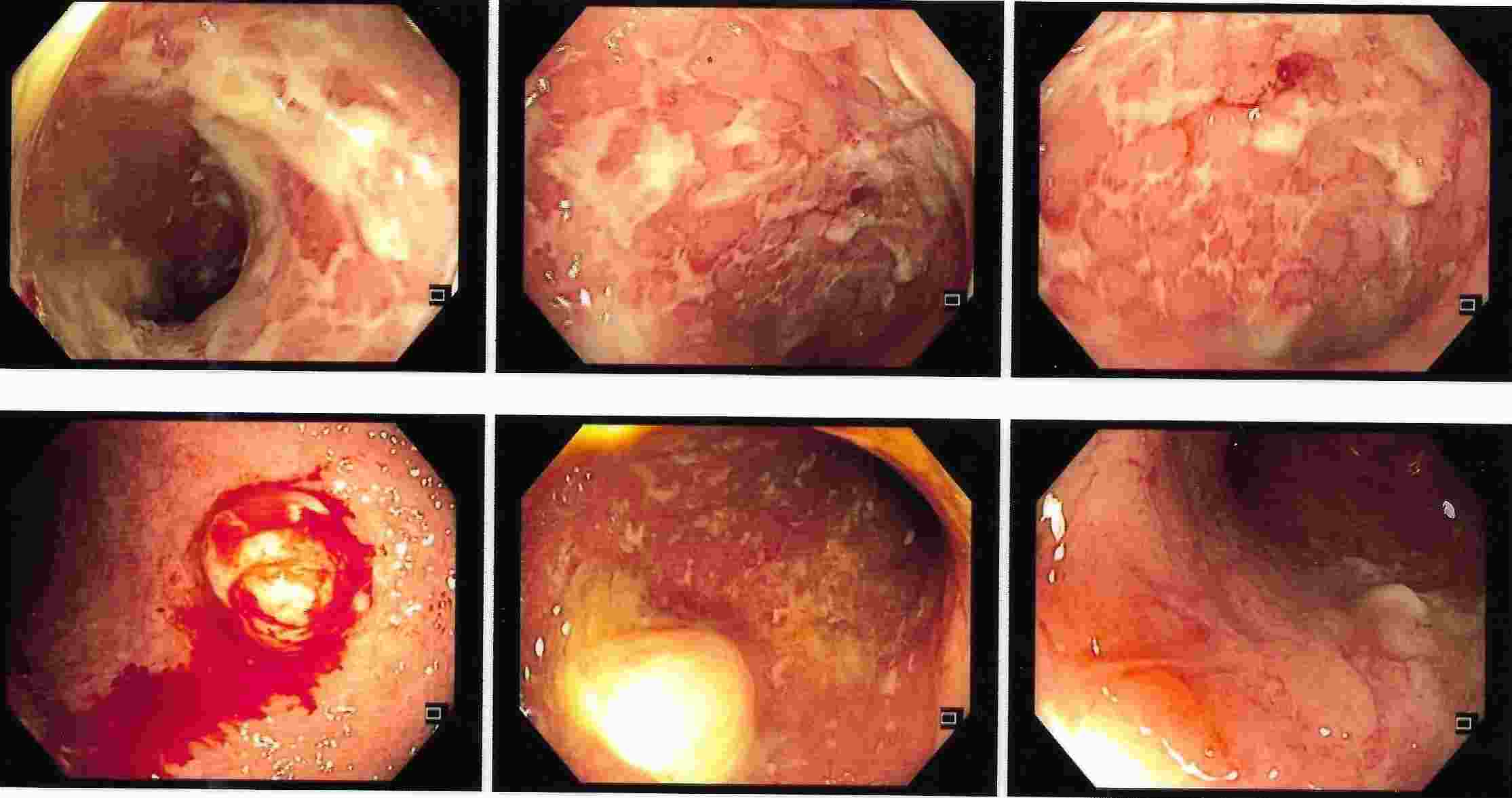

Ulcerative Colitis


Crohn's Disease
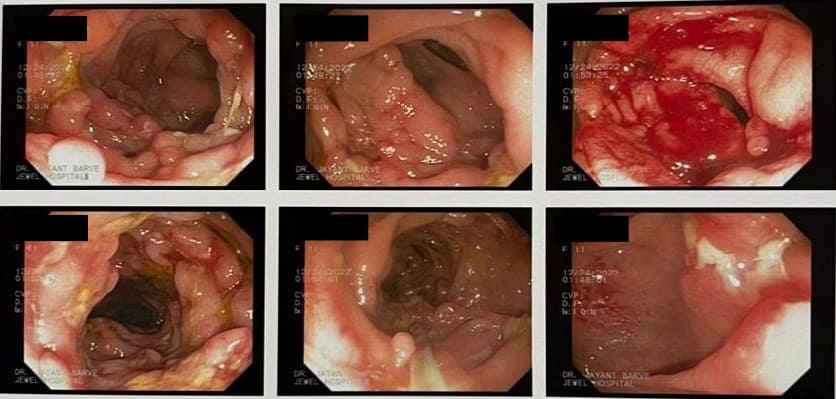

Hemorrhoids
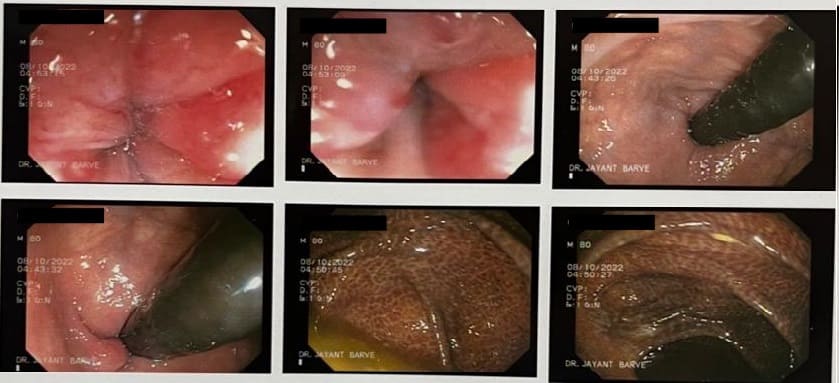

Pain in the rectum or anal region is commonly due to fissure or thrombosed piles and can be
diagnosed by Colonoscopy. Bleeding from colon or narrowing of the colon can be treated by endoscopic
methods without need for surgery.
Irritable bowel syndrome (IBS) is a very common condition in Gastroenterology and can have significant
physical, psychological and social handicap. IBS can be diagnosed by good history and physical examination.
As there are no investigations, which can prove the diagnosis of IBS, Colonoscopy is necessary to exclude
other diseases of colon.
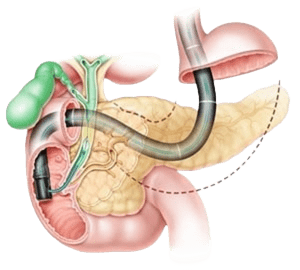
GALL BLADDER STONES TREATMENT
Endoscopic Retrograde Cholangio Pancreatography is an advanced endoscopic procedure related to
diseases of pancreas and biliary tree. Common indication for ERCP is jaundice due to obstruction
of biliary tube, which drains the bile from the liver into the intestine.
Obstruction can be due to a gallstone, which has slipped into bile tube and has blocked the bile tube.
These Stones can be removed by ERCP, without any surgery being involved.
This procedure is necessary if the patient has stones in the gallbladder and also in bile tube and
is always performed before Laparoscopic removal of gallbladder. Cancer of the gallbladder, biliary tree, pancreas,
duodenum or obstruction by lymph nodes can be responsible for jaundice and can be very effectively
treated by ERCP without any need for surgery.
This technique is important in these conditions as majority of the patients coming for jaundice are at an advanced stage of cancer and need palliative treatment to give relief from severe itching and jaundice. Infection or narrowing in the biliary tree can be treated by ERCP.
Common Biles Duct Stones
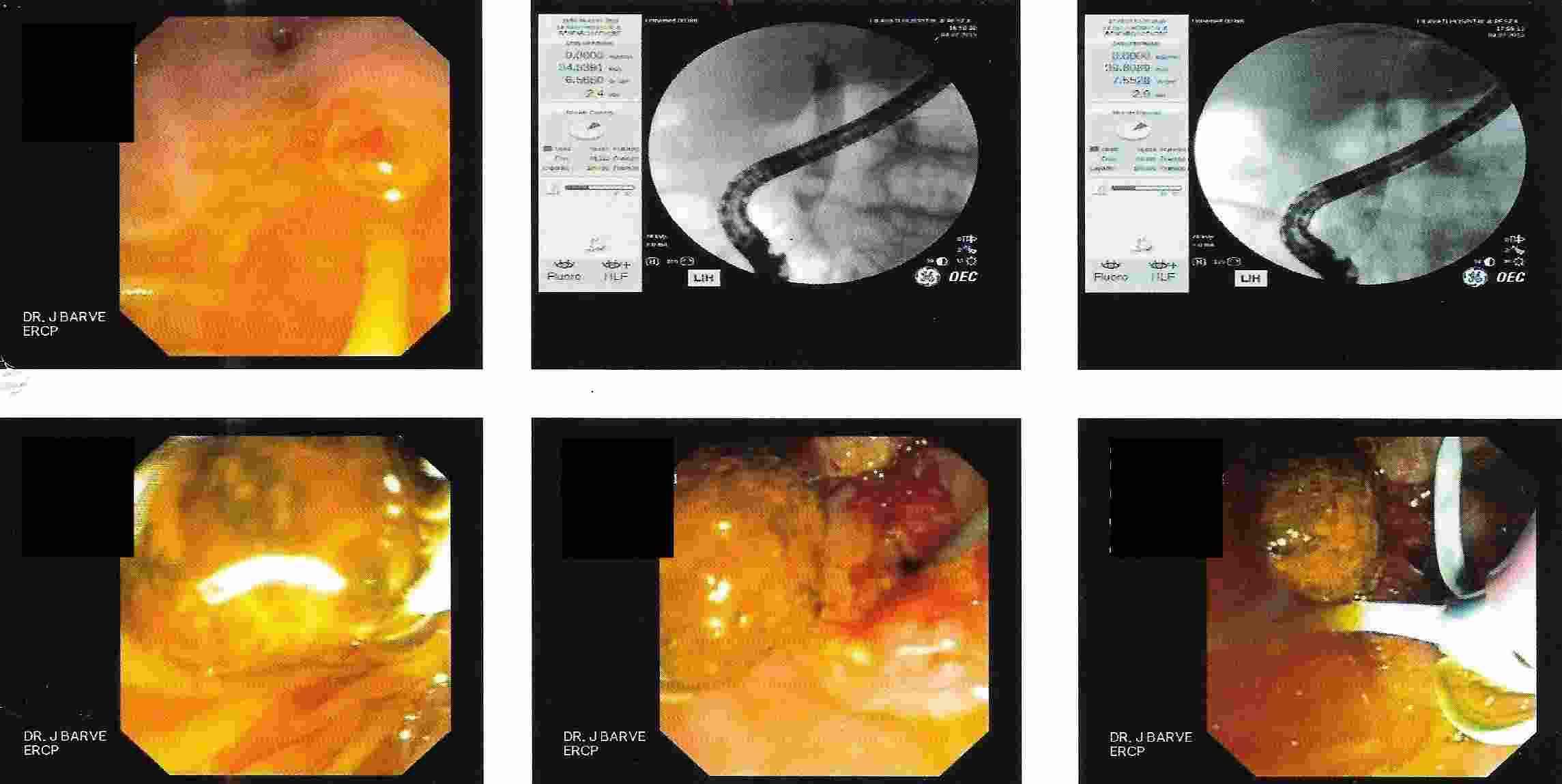

Common Biles Duct Stones
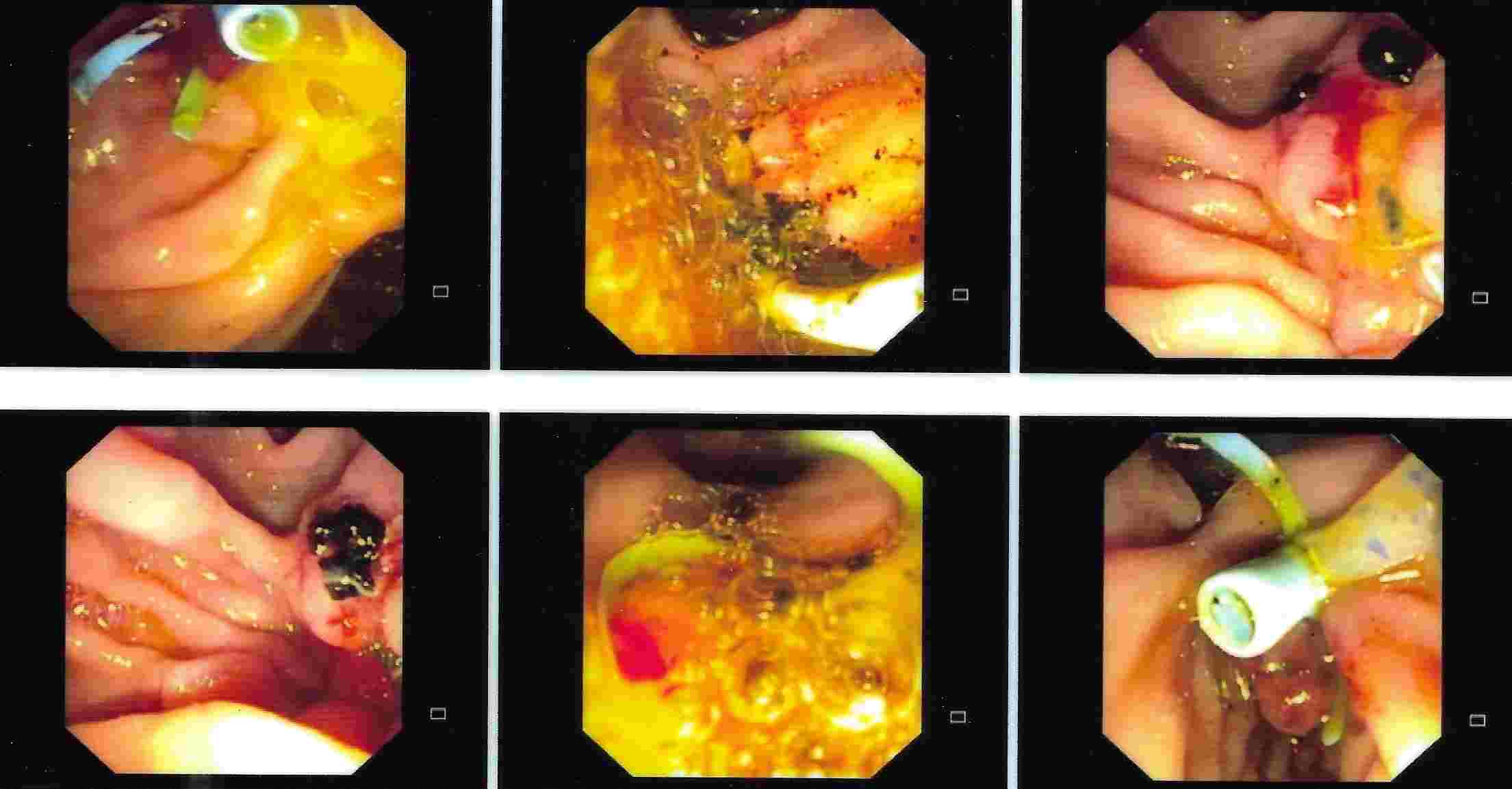

Cancer of the Bile Tube in Duodenum
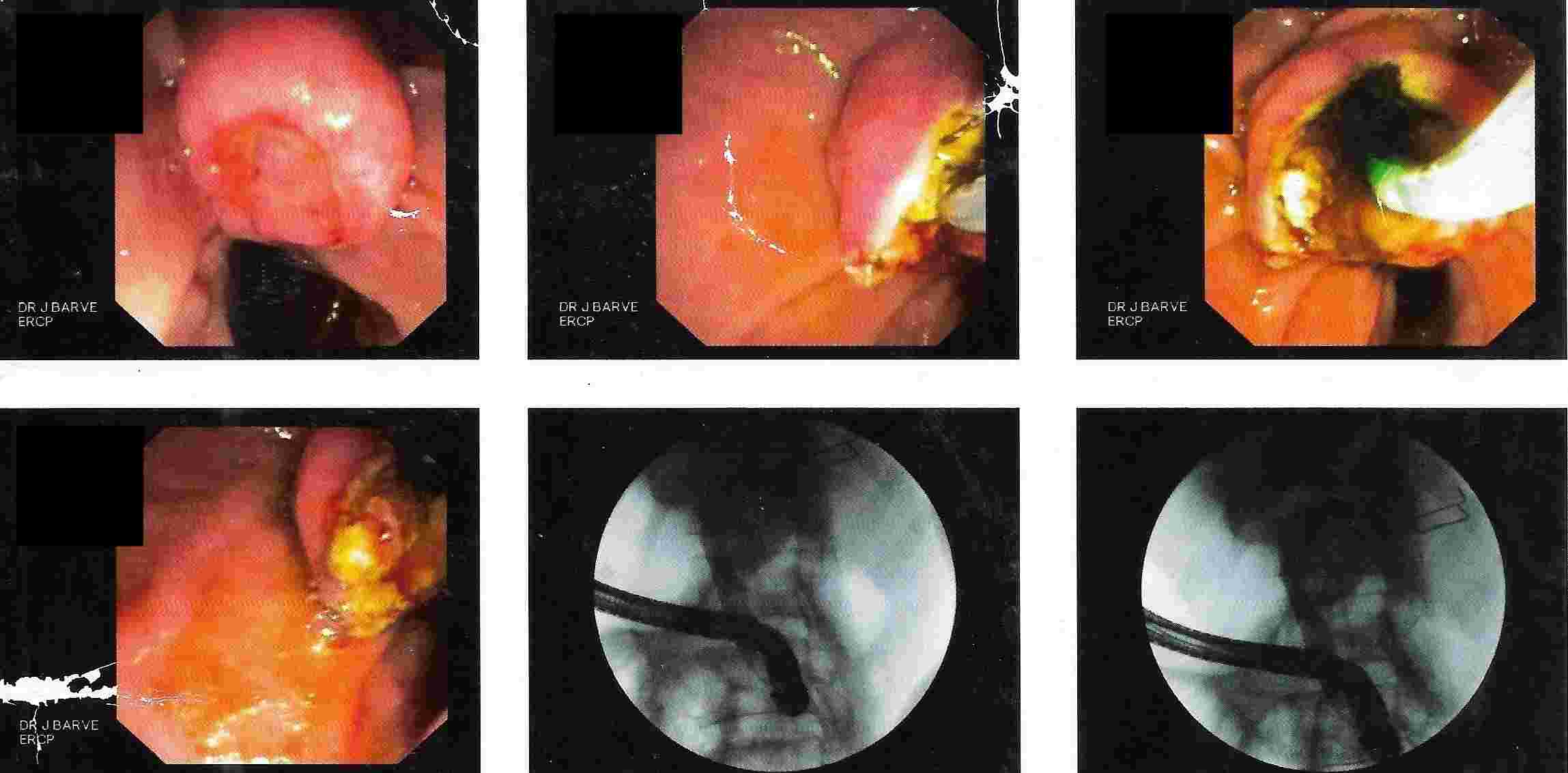

Impacted Stone in Common Bile Duct
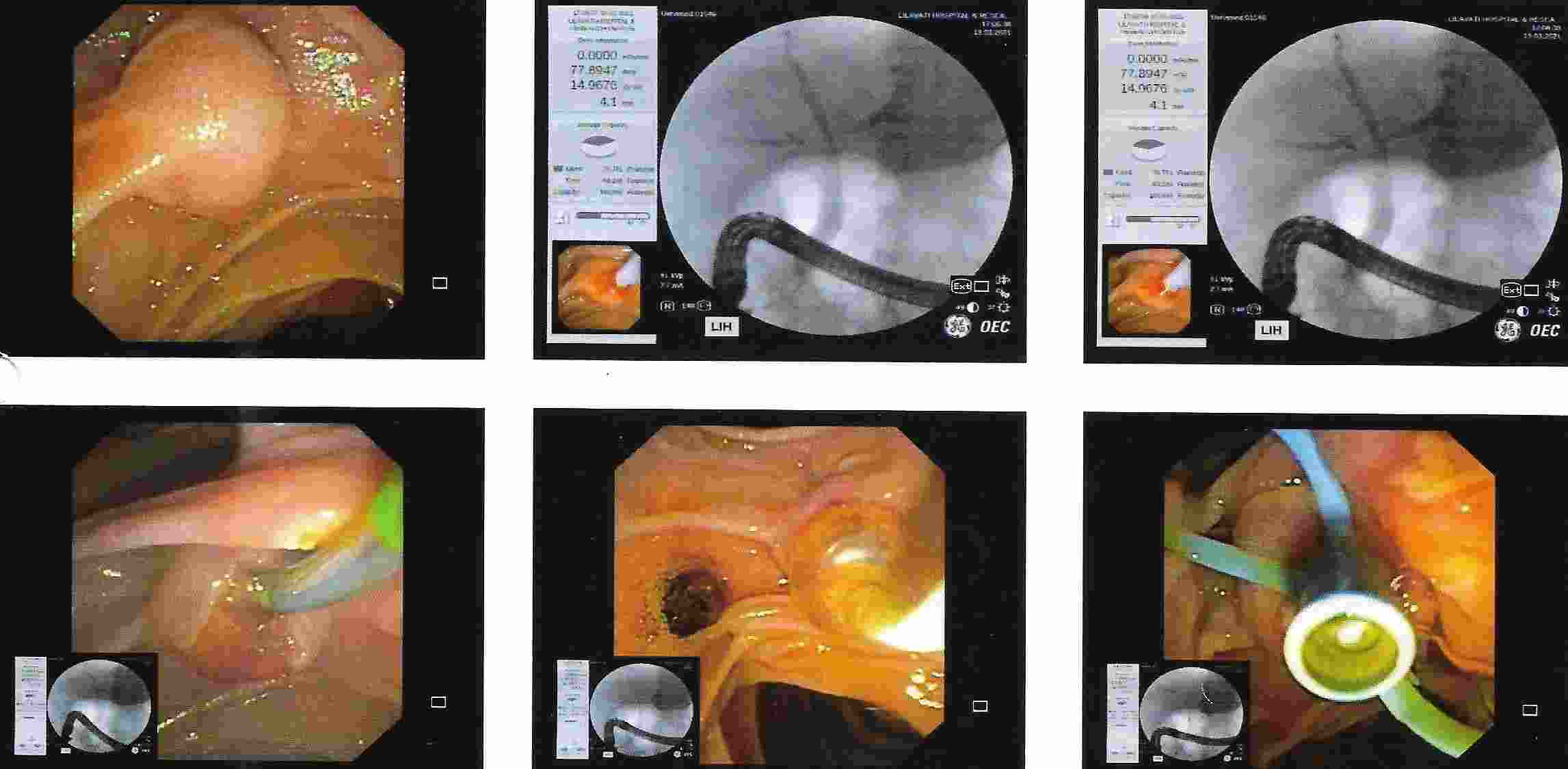

Chronic Pancreatitis is condition which can result in recurrent attacks of persistent and severe pain.
This can be due to presence of stones or narrowing of the pancreatic duct and can be treated by ERCP.
Pancreatic pseudocyst / collection of fluid is a complication of pancreatitis, which results
in abdominal pain, vomiting, fever etc. It is a serious condition which can be treated by ERCP.
Treatment of Chronic Pancreatitis by Stent
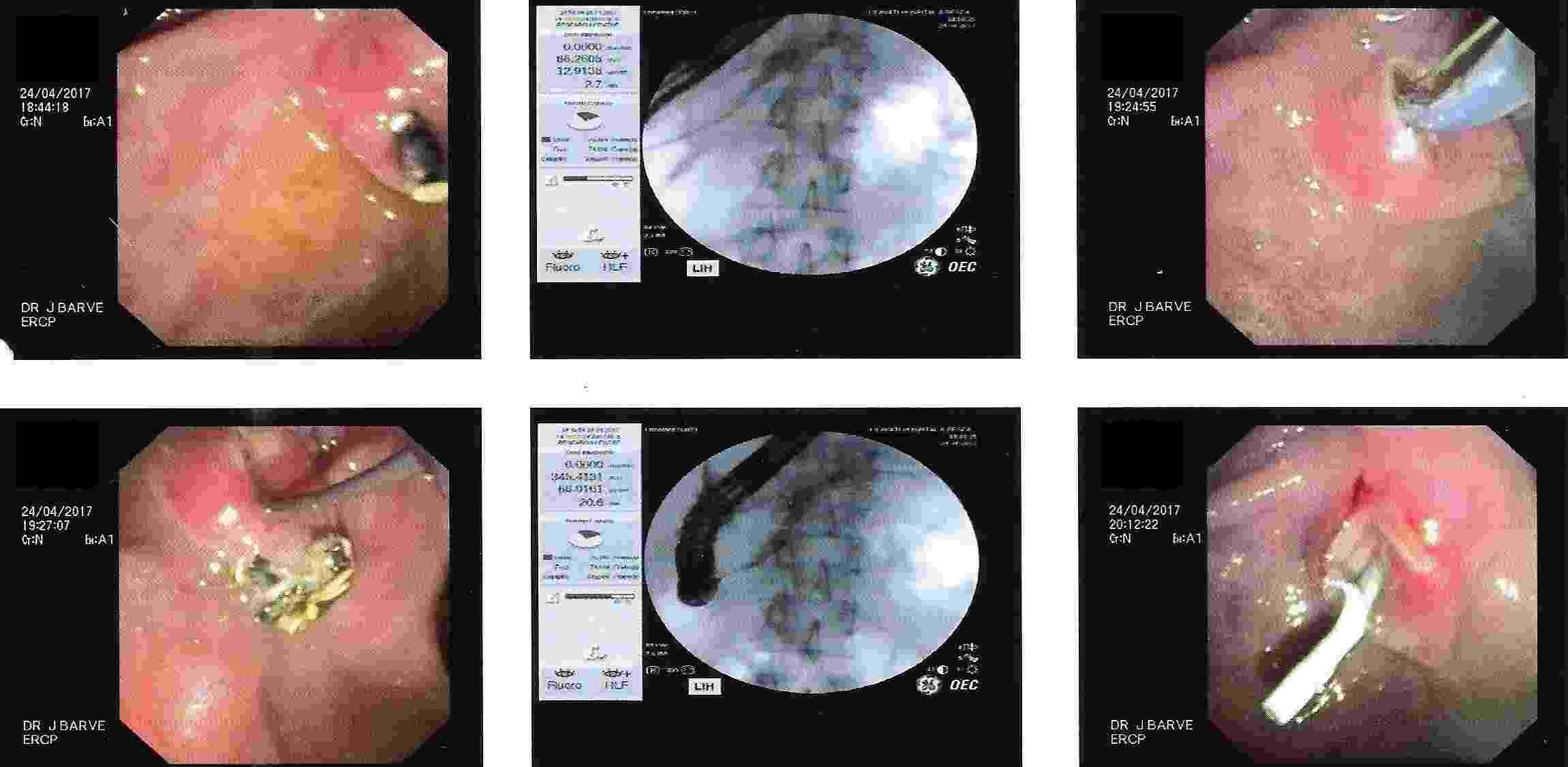

Most of the lesions of biliary system and pancreas were treated earlier by surgery with its own complications, but now with ERCP these conditions can be treated without any surgery and morbidity and mortality related to surgery, and as a cheaper option for surgery and has become treatment of choice for the same.
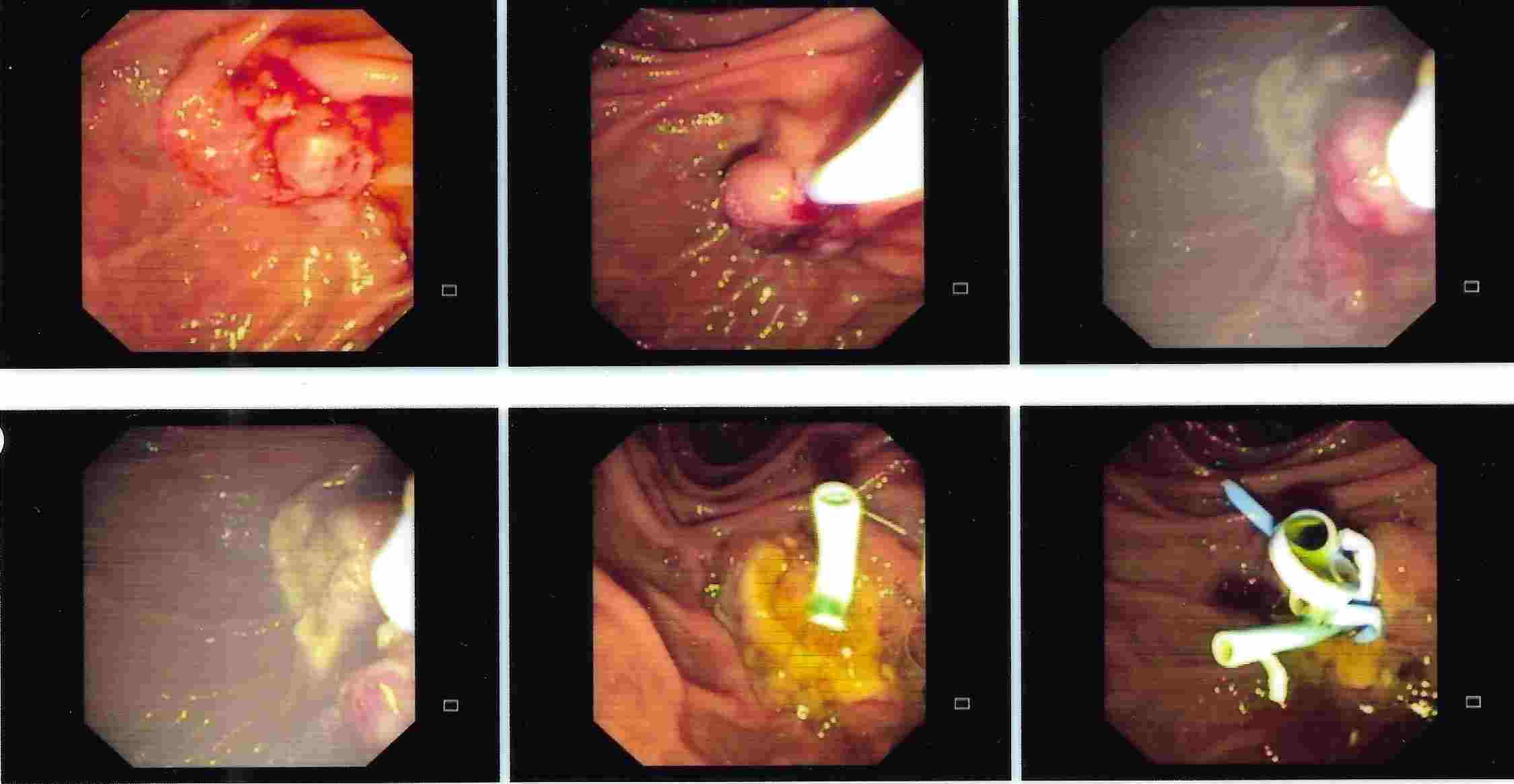

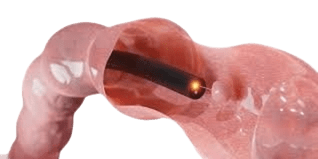
Small bowel Visualisation or enteroscopy is a technique useful to make the diagnosis of diseases
of small intestine. Small intestine is a very long tubular structure, almost 10’ to 12’ in length and hence
there are very limited options to make the correct diagnosis of diseases of small intestine. Enteroscopy
can be performed through mouth or from rectum, depending upon where the lesion is present.
Obscure bleeding in GI tract especially for patients who are on blood thinners is a common indication for enteroscopy.
Small intestine can also be studied by a technique of wireless capsule endoscopy. In this procedure patient swallows a
small camera and signals from the camera are recorded as a video film from outside.
Small Bowel Endoscopy / Enteroscopy
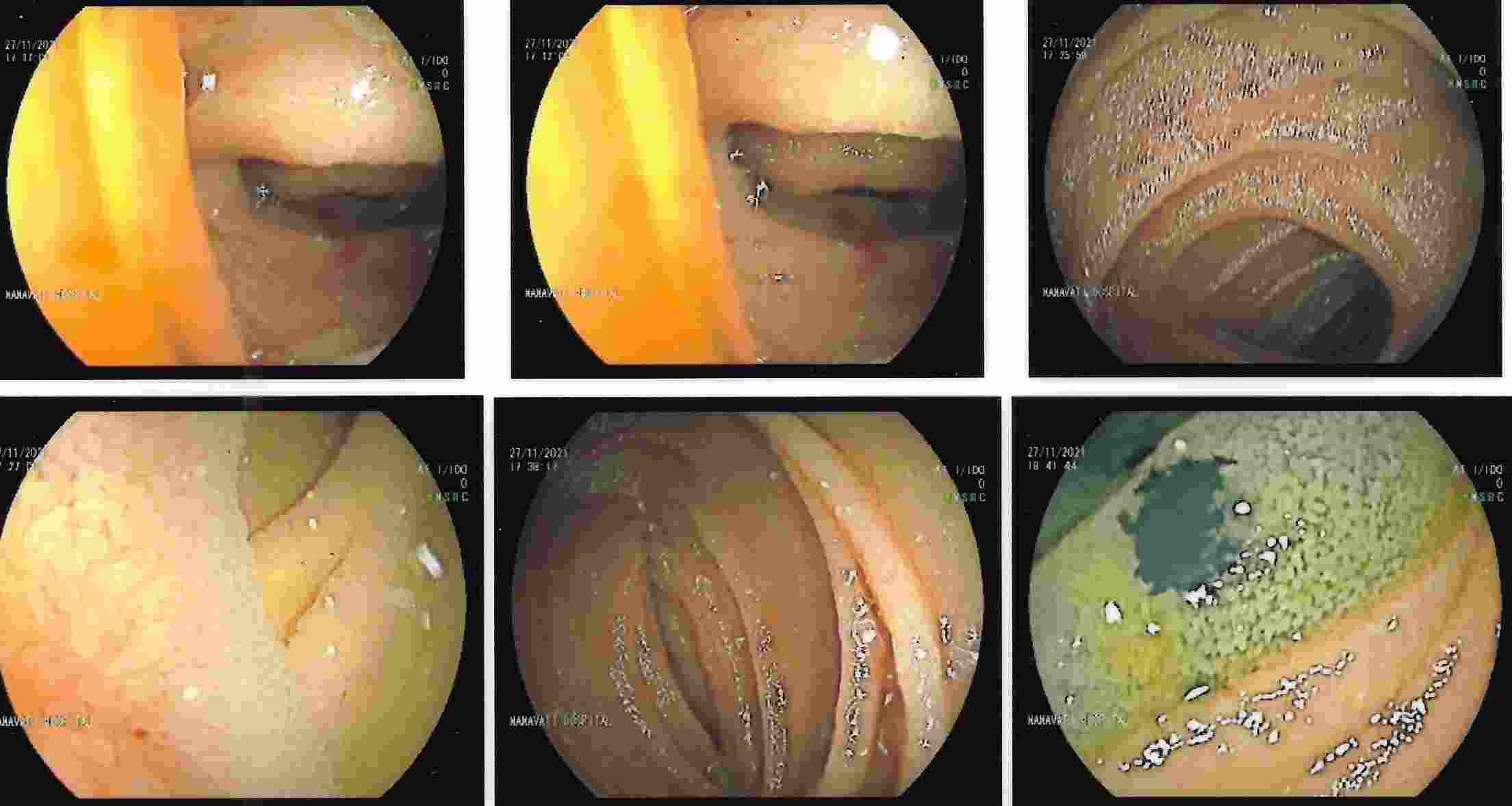

Endoscopic ultrasonography is an advanced technique where ultrasound probe is attached to endoscope and sonography of abdominal organs is performed. This procedure allows visualization and access to various abdominal organs for biopsy and various endoscopic procedures that replace need for surgery.

Call us at +9082398791
Call us at +919136041545
Whatsapp: +91-9082398791
No. 89, N. S. Road Number 1,
JVPD Scheme, Juhu
Andheri West
Mumbai 400049, India
Tel : 022-45038145
OPD Time : 11.30 am - 2.00 pm
5.00 pm - 7.30 pm
By appointment only
Mumbai 400056, India
Tel : 022-26267500
OPD Time : 2.30 pm - 4.00 pm
By appointment only
General Arunkumar Vaidya Nagar,
Bandra West, Mumbai 400050, India
Tel : 022-26751000, 26568000.
Visiting Hours : Mon Wed Fri 10 am - 11 am
By appointment only
Terms & Conditions | Legal Disclaimer | Privacy Policy
Terms & Conditions | Legal Disclaimer | Privacy Policy
© Copyright 2020, Dr. JAYANT BARVE. All Rights Reserved.
Disclaimer: The purpose of this website (www.jayantbarve.in) is solely for the purpose of creating awareness and imparting education regarding gastroenterology and Hepatology. This shall not be treated as a substitute to a professional gastroenterologist's advice or prescription. Every individual and their case is different, so the results of any of the treatments mentioned on the website may vary. This website contains graphic images of before and after results of procedures, so viewer discretion is advised.
Disclaimer: The purpose of this website (www.jayantbarve.in) is solely for the purpose of creating awareness and imparting education regarding gastroenterology and Hepatology. This shall not be treated as a substitute to a professional gastroenterologist's advice or prescription. Every individual and their case is different, so the results of any of the treatments mentioned on the website may vary. This website contains graphic images of before and after results of procedures, so viewer discretion is advised.
